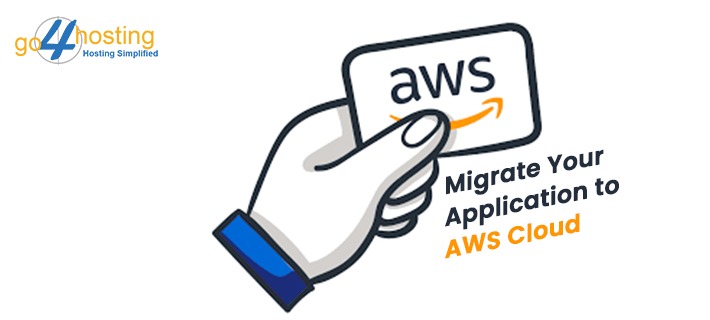Steps for a Successful Migration of Applications to the AWS Cloud

While cloud hosting india computing may have brought on huge productivity enhancements across a variety of industries, you cannot just plunge into the best cloud solutions available. The shifting of data and applications to the cloud is desirable and appears to be a bold move. This is because there are many key things that businesses must consider to make sure that their transition is seamless and successful. If you can consider these important points before you actually diving into new technology to avoid the pitfalls later.
The successful strategies for migrating applications to the cloud are founded on the 5 R’s of cloud migration which Gartner had earlier outlined. Businesses will start deciding on ways to migrate an application only in the second stage of the migration process. This is the stage of Portfolio discovery, planning, and in this stage; they seek to determine what their environment contains, what their interdependencies are, where applications are simpler to migrate, which are more challenging, and ways in which they will shift each application.
On the basis of this knowledge, the businesses are then able to chalk out a definite plan. This plan may be changed and tweaked as the process of migration. According to the plan, they can decide how to migrate each application and the order in which such migration will take place. Depending on the current licensing systems and architecture, migration complexity may change. Usually starting with an application that is on the spectrum of the low-complex end is always advisable. Such a migration is simpler to complete. Then you can move to the more complex ones.
What are the steps for cloud migration?
AWS Cloud Migration Steps: –
Rehosting: The first strategy for migrating applications is rehosting which is also popularly known as “lift-and-shift”. Many cloud storage projects are seen to move towards net new development using the cloud-native approach, but when businesses try to perform the migration faster, most applications get re-hosted. Such rehosting can be accomplished using tools while some clients prefer doing this manually. Incidentally, it has been noticed that it is easier to re-architect applications if they are already running in clouds. this may be because the business already has skills to optimize it or the toughness of migrating the application and data that has already been accomplished.
Replatforming: Replatforming also popularly known as “lift-tinker-and-shift” is another strategy used to successfully migrate an application to the cloud. You may have to make some optimizations to get benefits but you will not need to alter the core architecture of applications. You can try to cut down the time needed for handling database instances by shifting to Amazon RDS or a Database-as-a-Service Platform, and by shifting applications to a platform like Amazon Elastic Beanstalk that is fully managed.
Repurchasing: Repurchasing refers to shifting of a different product; for instance, shifting a CRM to Salesforce or a Content Management System to Drupal, etc.
Refactoring/ Rearchitecting: The fourth key step is that of re-architecting or refactoring where the application was structured and created is re-imagined by using a cloud-native strategy. This is usually driven when there is a need to powerfully urge one part of businesses to scale features and add new features. This might be hard to deploy in the existing environment because the migration from monolithic setup to server-less architecture is very costly. But for improving business agility and other benefits you can refactor your application.
Retire: When any given workload fails to offer any kind of business value and is not even needed for another workload, it is best to get rid of it or “retire” it. It has been seen that nearly 10% of any business IT portfolio does not remain useful and these can easily be turned off. This is beneficial because the savings help the business and direct team attention to resources which other people will use.
Retaining: Retaining is revisiting or not doing anything at least for now. When you are not yet prepared to prioritize any application which may have been recently upgraded you can retain it. You may also not be interested in migrating certain applications. In other words, you must only migrate those applications which will help your business.
Conclusion: –
The whole process of cloud migration can be rather overwhelming. Businesses should have an in-depth understanding of their on-site infrastructure and also the best options in which the cloud can offer. When you attempt a migration manually it is usually impracticable and if you depend on outdated information, you can miss out on the key information during evaluations. By dealing with the right questions and thorough analysis of the right data, companies should be able to complete AWS cloud migration smoothly. Selecting the best application migration option involves a decision that cannot be taken in isolation. Any such decision is basically an infrastructure modernization decision. So, it must be approached in a much wider context of application portfolio management. The decision is not really on migration; it is more of a decision on optimization. In short, businesses have to see which migration techniques and managed cloud platforms can optimize an application’s contributions towards IT goals.





